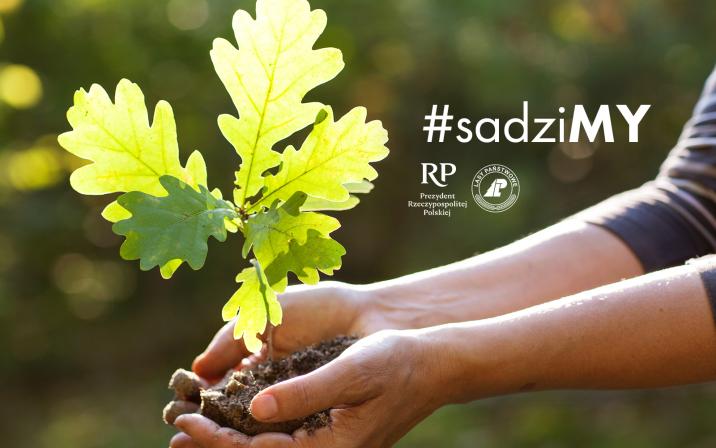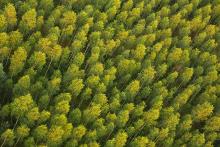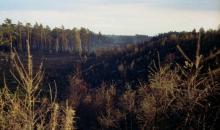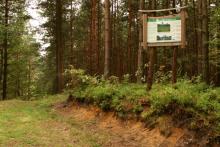 Asset Publisher
Asset Publisher
Polish forests
Poland is in the European lead, while concerning the area of all forests. They cover about 29,2 % of the country territory, and grow within the area of 9,1 million hectares. The overwhelming majority of the forests is state owned, of which almost 7,6 million hectares are managed by the State Forests National Forest Holding..
The number of Polish forest is still growing. The forestation rate of the country has increased from 21 % in 1945 to 29,2 % at the moment. Between 1995 and 2008, the forest area increased by 310 thousand ha. The basis for afforestation works is the "National Programme for Increasing the Forest Cover" (KPZL), assuming an increase of the forestation rate up to 30 % by 2020 and up to 33 % by 2050. Polish forests abound in flora, fauna and fungi. 65 % of the total number of animal species live there.
The forests grow in our country on poor soils, mainly because of the development of the agriculture in previous years. It influences the distribution of the types of the forest sites in Poland. Over 55 % of the forest areas is covered with coniferous forests. In other areas, there are forest sites, mainly the mixed ones. Their small part constitute alder and riparian forests – not more than 3 %.
In the years 1945 – 2011 the area of natural deciduous tree stands within the area of the State Forests National Forest Holding increased from 13 to 28,2 %.
Within the lowlands and uplands the most often occurring tee species is pine. It covers 64,3 % of the forest area of the State Forests National Forest Holding and 57,7 % of private and commune forests. In the mountains the predominant species is European spruce ( in the west) and European spruce with beech (in the east). Domination of pine is the result of carrying on sustainable forest management in the past. Once, the monocultures (crops or cultivations of one species) were the answer to the great demand of industry for wood. Such forests appeared to be quite fragile to climatic factors. They also were often the prey of pests' expansion.
In Polish forests, the share of other tree species, especially deciduous trees have been systematically increasing. The foresters have stepped aside from monocultures – that is why, they try to fit specific species of the forest stand to the natural stand, that would be proper for the given area. Thanks to that, in the years 1945 – 2011, the area of the deciduous tree stands within the lands of the State Forests National Forest Holding increased from 13 to 28,2 %. There occur more and more frequently the following tree species: oaks, ashes, maples, sycamore maples, elms, but also birches, beeches, alders, poplars, hornbeams, aspens, tilias and willows.
Our forests are the most often represented by the forest stands aged 40 to 80 years. The average age of the forest equals 60 years. More and more trees are of big size at the age over 80 years. Since the end of the Second World War, the forests' area has increased up to almost 1,85 million hectares.
Raport o stanie lasów w Polsce 2012
 Asset Publisher
Asset Publisher
Akcja #sadziMY
Akcja #sadziMY
Posadź drzewo z Prezydentem RP i leśnikami
Piąta edycja akcji #sadziMY odbędzie się 2 i 3 października. Na wielkie narodowe sadzenie drzew w roku poprzedzającym stulecie istnienia Lasów Państwowych leśnicy przygotowali milion sadzonek. Będzie je można otrzymać we wszystkich nadleśnictwach w Polsce.
Polskie lasy są w świetnej kondycji. U progu jubileuszu setnej rocznicy powstania, Lasy Państwowe konsekwentnie kontynuują działania na rzecz zwiększania lesistości kraju, która obecnie wynosi 29,6 proc. Oznacza to, że lasy zajmują niemal trzecią część Polski.
Na początku października leśnicy ponownie zapraszają Polaków do ogólnopolskiego sadzenia drzew.
Punkt kulminacyjny akcji #sadziMY będzie miał miejsce we wtorek 3 października na terenie Nadleśnictwa Suchedniów (RDLP w Radomiu). Tam drzewa będzie sadziła para prezydencka. Prezydent Andrzej Duda i jego żona Agata Kornhauser-Duda nie tylko patronują przedsięwzięciu od jego pierwszej edycji, ale także sami, własnym przykładem, zachęcają do działania.
– Po raz piąty rusza akcja #sadziMY. Jak co roku bierzemy w niej udział i serdecznie do tego zachęcamy – mówi prezydent.
Każdy chętny może zgłosić się do najbliższego nadleśnictwa, by odebrać sadzonkę i zasadzić ją na własnym gruncie. W Polsce jest 429 nadleśnictw. Wszystkie razem przygotowały milion sadzonek różnych gatunków drzew i krzewów. Leśnicy będą je rozdawać w poniedziałek i wtorek 2 i 3 października między 9.00 a 15.00. Stoiska z sadzonkami będzie można też spotkać w centrach niektórych miast. Dokładne lokalizacje najlepiej sprawdzić na stronach internetowych nadleśnictw i regionalnych dyrekcji Lasów Państwowych.
Jak podkreśla Józef Kubica, dyrektor generalny Lasów Państwowych: - Lasów nigdy nie jest za dużo. Sumiennie realizujemy założenia Krajowego Programu Zwiększania Lesistości, czyli tworzymy warunki do zwiększenia lesistości Polski do 33 proc. w 2050 r. Dążymy do tego, by Polska była jeszcze bardziej zielona. Dla dobra przyrody, dla komfortu życia Polaków, dla rozwoju naszej gospodarki.
Leśnicy będą rozdawać sadzonki nieodpłatnie. Po odbiór drzewek warto przyjść z własnym opakowaniem, które zabezpieczy korzenie drzew przed wysuszeniem. Drzewka można przechować przez kilka dni przed wysadzeniem, układając płasko na gruncie i przesypując korzenie wilgotnym piaskiem.


 fot. Paweł Fabijański
fot. Paweł Fabijański
 fot. Paweł Fabijański
fot. Paweł Fabijański
 fot. Paweł Fabijański
fot. Paweł Fabijański




